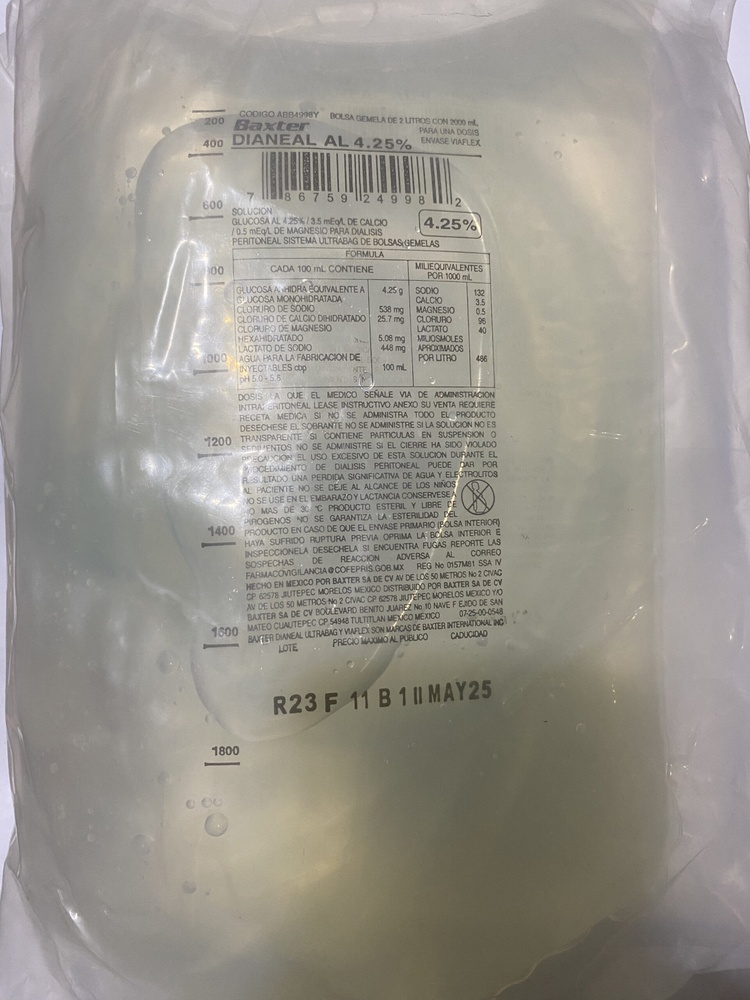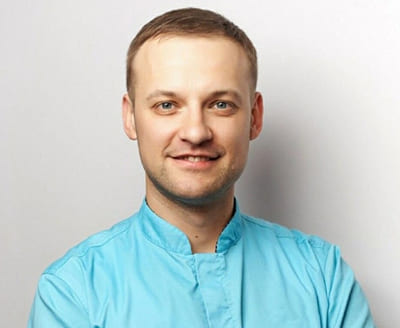

BALANCE 4.25% GLUCOSE, 1.25 mmol/L CALCIUM, PERITONEAL DIALYSIS SOLUTION

Ask a doctor about a prescription for BALANCE 4.25% GLUCOSE, 1.25 mmol/L CALCIUM, PERITONEAL DIALYSIS SOLUTION

How to use BALANCE 4.25% GLUCOSE, 1.25 mmol/L CALCIUM, PERITONEAL DIALYSIS SOLUTION
Introduction
Package Leaflet: Information for the User
balance4.25% glucose, 1.25 mmol/l calcium, solution for peritoneal dialysis
Read all of this leaflet carefully before you start using this medicine because it contains important information for you.
- Keep this leaflet, you may need to read it again.
- If you have any further questions, ask your doctor, pharmacist, or nurse.
- This medicine has been prescribed for you only. Do not pass it on to others. It may harm them, even if their signs of illness are the same as yours.
- If you get any side effects, talk to your doctor, pharmacist, or nurse. This includes any possible side effects not listed in this leaflet. See section 4.
Contents of the package leaflet:
- What is balanceand what is it used for
- What you need to know before you start using balance
- How to use balance
- Possible side effects
- Storage of balance
- Contents of the pack and other information
1. What is balance and what is it used for
balanceis used to clean the bloodvia the peritoneum in patients with chronic renal failure in the terminal phase. This type of blood cleaning is known as peritoneal dialysis.
2. What you need to know before you start using balance
Do not usebalance4.25% glucose, 1.25 mmol/l calcium
- if your blood potassium level is too low
- if your blood calcium level is too low
- if your body fluid volume is too low
- if you have low blood pressure
- if you have a metabolic disorder known as lactic acidosis
Peritoneal dialysis should not be started if you have:
- abdominal region disorderssuch as
- wounds, or after surgery
- burns
- extensive skin inflammatory reactions
- peritonitis
- unhealed suppurating wounds
- umbilical, inguinal, or diaphragmatic hernias
- tumors in the abdomen or intestine
- inflammatory bowel diseases
- intestinal obstruction
- pulmonary disease, especially pneumonia
- sepsis
- very high blood fat levels
- accumulation of toxins from urine in the blood, which cannot be removed by blood cleaning
- severe malnutrition and weight loss, especially if adequate protein nutrition is not possible
Warnings and precautions
Tell your doctor immediately:
- in case of hyperparathyroidism(elevated parathyroid gland activity). It may be necessary to take calcium chelators containing additional phosphates and/or vitamin D.
- in case of low calcium levels. It may be necessary to take calcium chelators containing additional phosphates and/or vitamin D or to use a peritoneal dialysis solution with a higher calcium concentration.
- in case of severe loss of electrolytes (salts)caused by vomiting and/or diarrhea.
- in case of abnormal kidneys(polycystic kidneys)
- in case of peritonitis, recognizable because the peritoneal dialysis solution that comes out of your peritoneum is cloudy and/or abdominal pain. Show your doctor the bag containing the drainage solution.
- in case of severe abdominal pain, abdominal distension, or vomiting. This may be a sign of encapsulating peritoneal sclerosis, a complication of peritoneal dialysis treatment that can be life-threatening.
Peritoneal dialysis may cause loss of proteinsand water-soluble vitamins.
A suitable diet or nutritional supplements should be followed to avoid deficiency states.
Your doctor should check the balance of electrolytes (salts), kidney function, body weight, and nutritional status.
Due to the high glucose concentration in balance 4.25% glucose, 1.25 mmol/l calcium, it should be used with caution and under the supervision of your doctor.
Usingbalancewith other medicines
Tell your doctor or pharmacist if you are using, have recently used, or might use any other medicines.
Peritoneal dialysis may alter the effect of some medicines, so it may be necessary for your doctor to change the dose for some of them, especially the following:
- medicines for heart failure, such as digoxin.
Your doctor will check your blood potassium level and, if necessary, take appropriate measures.
- medicines that increase urine excretion, such as diuretics.
- medicinesadministered orally and that lower blood sugar levelsor insulin. Blood sugar levels should be regularly monitored. Diabetic patients may need to adjust their daily insulin dose.
Pregnancy and breastfeeding
If you are pregnant or breastfeeding, think you may be pregnant, or plan to become pregnant, consult your doctor before using this medicine. There are no adequate data on the use of balancein pregnant or breastfeeding women.
If you are pregnant or breastfeeding, you should use balanceonly if your doctor considers it absolutely necessary.
Driving and using machines
The influence of balanceon the ability to drive or use machines is negligible or non-existent.
3. How to use balance
Follow the instructions for administration of this medicine exactly as indicated by your doctor. If you are unsure, consult your doctor or pharmacist again.
Your doctor will determine the method, duration, and frequency of use, as well as the required volume of solution and the dwell time in the peritoneal cavity.
If you have tension in the abdominal region, your doctor may reduce the volume.
Continuous Ambulatory Peritoneal Dialysis (CAPD)
- Adults:The usual dose is between 2000 - 3000 ml of solution four times a day, depending on body weight and kidney function.
The solution is drained after a dwell time of between 2 and 10 hours.
- Children:The doctor will determine the required volume of dialysis solution depending on tolerance, age, and body surface area of the child.
The recommended initial dose is 600 - 800 ml/m2 body surface area four times a day (up to 1000 ml/m2 at night).
Automated Peritoneal Dialysis (APD)
For this, the sleep•safeor Safe•Lock system is used. The exchange of bags is automatically controlled by the cycler during the night.
- Adults:The normal prescription is 2000 ml (maximum 3000 ml) per exchange with 3-10 exchanges during the night and the cycler time of 8 to 10 hours, and one or two exchanges during the day.
- Children:The volume per exchange should be 800-1000 ml/m2 (up to 1400 ml/m2) body surface area with 5-10 exchanges during the night.
Use balanceonly in the peritoneal cavity.
Use balanceonly if the solution is clear and the packaging is not damaged.
balanceis available in a double-chamber bag. Before using the solution in the two chambers, mix the solutions as described below.
Instructions for use:
Stay•safesystem for Continuous Ambulatory Peritoneal Dialysis (CAPD)
First, heat the bag with the solution to body temperature. This should be done using an appropriate bag warmer. A 2000 ml bag at an initial temperature of 22°C will need about 120 minutes of heating time. You can obtain more detailed information in the instructions for your bag warmer. To heat the solution, microwaves should not be used due to the risk of local overheating. The exchange of bags can be carried out after heating the solution.
- Preparation of the solution
Check the bag with the tempered solution (label, expiration date, transparency of the solution, integrity of the bag and overbag, integrity of the weld). Place the bag on a solid surface. Open the overbag of the bag and the disinfection cap seal. Wash your hands using an antimicrobial washing solution. Roll up the bag, which is placed horizontally on the overbag, from one of the lateral edges until the intermediate weld opens. The solutions from the two chambers mix automatically. Now roll up the bag from the top edge until the lower triangle weld is completely open. Check that all welds are completely open. Check that the solution is clear and that the bag has no leaks.
- Preparation of the bag exchange
Hang the bag with the solution on the upper hanger of the infusion stand, unroll the tubes of the bag with the solution, and place the DISC connector in the organizer. After unrolling the tubes of the drainage bag, hang the drainage bag on the lower hanger of the infusion stand. Place the catheter connector on one of the two connections of the organizer. Put the new disinfection cap on the remaining free connection. Disinfect your hands and remove the protective cap from the DISC connector. Connect the catheter connector to the DISC connector.
- Outflow
Open the extension valve. The outflow starts. Position?
- Purge
Once the outflow is complete, purge the drainage bag with new liquid (approximately 5 seconds). Position?
- Inflow
Start the inflow by turning the rotary switch to the position.
- Safety step
Close the catheter extension by inserting the PIN into the catheter connector. Position?
- Disconnection
Remove the protective cap from the new disinfection cap and screw it onto the old one. Unscrew the catheter connector from the DISC connector and screw it onto the new disinfection cap.
- Closing the DISC connector
Close the DISC connector with the open end of the used disinfection cap, which is placed in the right hole of the organizer.
- Check the transparency and weight of the drained dialysate and if the effluent is clear, discard it.
Sleep•safesystem for Automated Peritoneal Dialysis (APD)
During automated peritoneal dialysis (APD), the cycler automatically heats the solution.
Sleep•safesystem of 3000 ml
- Preparation of the solution:see Stay•safe system
- Unroll the tube of the bag
- Remove the protective cap
- Place the connector in the free port of the sleep•safe tray
- The bag is ready for use with the sleep•safe equipment
Sleep•safesystem of 5000 and 6000 ml
- Preparation of the solution
Check the bag with the solution (label, expiration date, transparency of the solution, integrity of the bag and overbag, integrity of the weld). Place the bag on a solid surface. Open the overbag of the bag. Wash your hands using an antimicrobial washing solution. Unfold the intermediate weld and the bag connector. Roll up the bag, which is placed horizontally on the overbag, from the diagonal end towards the bag connector. The intermediate weld will open. Continue until the small chamber weld also opens. Check that all welds are completely open. Check that the solution is clear and that the bag has no leaks.
- – 5.: see sleep•safe system of 3000 ml
Safe•Locksystem for Automated Peritoneal Dialysis (APD)
During automated peritoneal dialysis (APD), the cycler automatically heats the solution.
- Preparation of the solution: see sleep•safe system of 5000 and 6000 ml
- Remove the protective cap from the connector of the connection line.
- Connect the lines to the bag.
- Break the internal stop by bending the line and the PIN more than 90° on both sides.
- The bag is ready for use.
The bags are for single use and any unused solution should be discarded.
After proper training, balancecan be used independently at home. Make sure to follow all the steps you have learned during training and maintain adequate hygiene conditions when exchanging bags.
Always check the turbidity of the drained dialysate. See section 2.
If you use morebalancethan you should
If you infuse an excess of dialysis solution into the peritoneal cavity, it can be drained. If you use too many bags, contact your doctor, as it may cause electrolyte and/or fluid imbalance.
In case of overdose or accidental ingestion, consult your doctor or pharmacist or call the Toxicology Information Service, phone 91 562 04 20, indicating the medicine and the amount ingested.
If you forget to usebalance
Try to achieve the total prescribed volume for each 24-hour period to avoid consequences that may endanger your life. You should consult your doctor if you have any doubts.
If you have any other questions about the use of this medicine, ask your doctor, pharmacist, or nurse.
4. Possible side effects
Like all medicines, this medicine can cause side effects, although not everybody gets them.
You may experience the following side effects as a result of peritoneal dialysis treatment in general:
very common(may affect more than 1 in 10 people)
- peritonitis, which is noticeable because the dialysate drained from your peritoneum is cloudy, abdominal pain, fever, discomfort, or, in very rare cases, sepsis.
Show your doctor the bag containing the drainage solution.
- inflammation of the skin at the catheter exit site or along the length of the catheter, recognizable by redness, swelling, pain, exudation, or crusts.
- hernia in the abdominal wall
Contact your doctor immediately if you experience any of these side effects.
Other side effects of the treatment are the following:
common(may affect up to 1 in 10 people)
- problems with the entry or exit of the dialysate
- feeling of stretching or fullness of the abdomen
- shoulder pain
uncommon(may affect up to 1 in 100 people)
- diarrhea
- constipation
rare(may affect up to 1 in 10,000 people)
- sepsis
not known(frequency cannot be estimated from the available data)
- breathing difficulties
- discomfort
- encapsulating peritoneal sclerosis, whose symptoms could be abdominal pain, abdominal distension, or vomiting
You may experience the following side effects when using balance:
very common(may affect more than 1 in 10 people)
- potassium deficiency
common(may affect up to 1 in 10 people)
- high blood sugar levels
- high blood fat levels
- weight gain
uncommon(may affect up to 1 in 100 people)
- calcium deficiency
- body fluid volume too low, which can be recognized by rapid weight loss, decreased blood pressure, rapid pulse.
- body fluid volume too high, which can be recognized by the presence of water in tissues and lungs, high blood pressure, breathing difficulties.
- dizziness
not known(frequency cannot be estimated from the available data)
- increased activity of the parathyroid gland with potential bone metabolism disorders
Reporting of side effects
If you experience any side effects, talk to your doctor, pharmacist, or nurse, even if it is possible side effects not listed in this leaflet. You can also report side effects directly through the Spanish Pharmacovigilance System for Human Use Medicines: https://www.notificaram.es. By reporting side effects, you can help provide more information on the safety of this medicine.
5. Storage of balance
Keep this medicine out of the sight and reach of children.
Do not use this medicine after the expiration date stated on the bag and carton after EXP. The expiration date is the last day of the month indicated.
Do not store below 4°C.
The ready-to-use solution should be used immediately, within 24 hours after mixing.
Medicines should not be disposed of via wastewater or household waste. Ask your pharmacist how to dispose of the packaging and medicines you no longer need. This will help protect the environment.
6. Container Content and Additional Information
Composition ofbalance
- The active ingredients in one liter of ready-to-use solution are
Calcium chloride dihydrate 0.1838 g
Sodium chloride 5.640 g
Sodium (S)-lactate solution 7.85 g
(3.925 g sodium (S)-lactate)
Magnesium chloride hexahydrate 0.1017 g
Glucose monohydrate 46.75 g
(42.5 g anhydrous glucose)
These amounts of active substance are equivalent to:
1.25 mmol/l calcium, 134 mmol/l sodium, 0.5 mmol/l magnesium, 100.5 mmol/l chloride, 35 mmol/l lactate, and 235.8 mmol/l glucose.
The other components are water for injectable preparations, hydrochloric acid, sodium hydroxide, and sodium bicarbonate.
Appearance of the Product and Container Content
The solution is transparent and colorless.
The theoretical osmolarity of the ready-to-use solution is 509 mOsm/l, the pH is approximately 7.0.
balanceis available in double-chamber bags. One chamber contains the alkaline sodium lactate solution and the other chamber contains the acidic glucose solution with electrolytes.
balanceis available in the following application systems and container sizes:
stay•safe: 4 bags of 2000 ml 4 bags of 2500 ml 4 bags of 3000 ml | sleep•safe: 4 bags of 3000 ml 2 bags of 5000 ml 2 bags of 6000 ml | Safe•Lock: 2 bags of 5000 ml 2 bags of 6000 ml |
Only some container sizes may be marketed.
Marketing Authorization Holder:
Fresenius Medical Care Deutschland GmbH, Else-Kröner-Straße 1, 61352 Bad Homburg v.d.H. Germany
Manufacturer:
Fresenius Medical Care Deutschland GmbH, Frankfurter Straße 6-8, 66606 St. Wendel Germany
Local Representative:
Fresenius Medical Care España S.A.
C/ Ronda de Poniente, 8, ground floor, Parque Empresarial Euronova,
28760 Tres Cantos (Madrid)
Spain
This medicinal product is authorized in the Member States of the European Economic Area under the following names:
See the end of this multilingual prospectus.
Date of the last revision of this prospectus: 01/2020
Detailed and updated information on this medicinal product is available on the website of the Spanish Agency for Medicines and Health Products (AEMPS) http://www.aemps.gob.es/.
- Country of registration
- Prescription requiredYes
- Manufacturer
- This information is for reference only and does not constitute medical advice. Always consult a licensed doctor before taking any medication. Oladoctor is not responsible for medical decisions based on this content.
- Alternatives to BALANCE 4.25% GLUCOSE, 1.25 mmol/L CALCIUM, PERITONEAL DIALYSIS SOLUTIONManufacturer: Fresenius Medical Care Deutschland GmbhPrescription requiredManufacturer: Fresenius Medical Care Deutschland GmbhPrescription requiredManufacturer: Fresenius Medical Care Deutschland GmbhPrescription required
Alternatives to BALANCE 4.25% GLUCOSE, 1.25 mmol/L CALCIUM, PERITONEAL DIALYSIS SOLUTION in other countries
The best alternatives with the same active ingredient and therapeutic effect.
Alternative to BALANCE 4.25% GLUCOSE, 1.25 mmol/L CALCIUM, PERITONEAL DIALYSIS SOLUTION in Poland
Alternative to BALANCE 4.25% GLUCOSE, 1.25 mmol/L CALCIUM, PERITONEAL DIALYSIS SOLUTION in Ukraine
Online doctors for BALANCE 4.25% GLUCOSE, 1.25 mmol/L CALCIUM, PERITONEAL DIALYSIS SOLUTION
Discuss dosage, side effects, interactions, contraindications, and prescription renewal for BALANCE 4.25% GLUCOSE, 1.25 mmol/L CALCIUM, PERITONEAL DIALYSIS SOLUTION – subject to medical assessment and local rules.













